By Chris MacIntosh at Capitalist Exploits
Greenwashing, in case you don’t know, is the “disinformation disseminated by an organization so as to present an environmentally responsible public image”.
You know, this sort of thing:
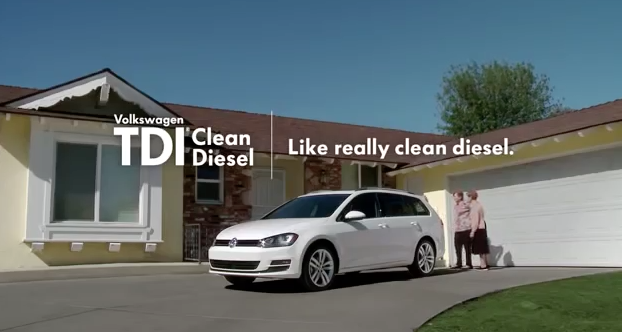
This is taken from the time of the now infamous Volkswagen emissions cheating scandal. Since then, other large car companies have faced similar controversy — jumping on the green band wagon. It’s because these days, it pays to be “green” (for more information, see Elon Musk).
But here’s the thing that otherwise intelligent people seem to fail to comprehend: Greenwashing extends way beyond false advertising in consumer goods. It’s made its way into politics, investment products, journalism, and now mainstream opinion in “the West”.
Greenwashing is actually now the norm, which we’re now going to get into after I fire off an early warning trigger alert:

This warning is if you’re a current believer in the generic clean energy revolution. You know the one — it goes something like this: Unless we “decarbonize” and move from fossil fuels to so called “clean” energy, within the next decade or so the world suffers irreversible and catastrophic changes that will:
- Lead to increasingly warmer temperatures
- Kill off swathes of wildlife, causing mass extinctions
- Cause untold starvation and hardship for us bipeds
- Increase inequality
- And so on…
Well, today we’re dissecting this popular narrative that has virtuous intentions, but — like many things our governments have been mandating these days — are doomed to fail and actually make things worse than if nothing was done at all.
“That’s a little hyperbolic,” I hear you say.
Well, let’s see…
Here are some cold, hard facts, regardless of how controversial they might seem by today’s standards.
Sticking with cars after the example of our friends at VW, let’s look at the large electric vehicle trend and start with this commendable premise:
We should replace pollutive gasoline-fired internal combustion engine automobiles with clean electric vehicles powered by renewable energy.
This is a countenanced sounding ambition and an easy sell to the public. It also represents a behemothic financial opportunity ($1.22 trillion by 2027), which is predicated on a half-truth, as we’ll see.
Now, the first part of this premise — replacing fossil fuel cars with clean cars — would be great.
Passenger cars are responsible for greenhouse gas emissions (less than 6% of the total, but still a large contributor).
I bet you thought it was higher, but it’s less than 6%. Here’s the math:
- Transportation contributes to 14% of greenhouse gasses.
- Passenger cars are 41% of transportation.
- That works out to 5.74% of all greenhouse gasses.
It’s the next part of this premise — powering these EVs with clean energy — where the gratuitous and irresponsible greenwashing comes in.
EVs run on electricity and that, unfortunately, means CO2.
Electricity generation (all uses) is the largest single source of greenhouse gases (~25% of all emissions). Only 17.1% of electricity comes from renewables. Renewables are not green, and some renewables are not even bloody renewable.
Other “renewables” are far more damaging to the planet than passenger car emissions, as we’ll soon see.
Electricity must come from somewhere, and coal is the largest generator of electricity in the world by a long shot. Coal-generated electricity is vastly more pollutive than gasoline powered engines when it comes to carbon dioxide (CO2) and nitrous oxide (N2O).
Coal mining produces methane and sulphur dioxide (SO2). It damages the earth’s surface in mining and contaminates water supplies. Coal creates acid rain and is responsible for 41% of the world’s mercury poisoning.
So really, when you’re thinking of EVs… you should be thinking about coal. Everyone should. These are the facts, just the reality of the situation - however an inconvenient truth it might be.
“Wait!” you say. “How about other sources of power? Hydro, for example…? We could use hydro”
Good! Hydro power is also a great reference for greenwashing.
Hydroelectric power generation is among the most efficient, and is the best of the bunch when it comes to renewables, but it comes with its own limitations or outright cons that seem to be swept under the rug when discussing the energy needs of the future.
For starters, hydro destroys entire riparian ecosystems (check out Three Gorges, for example).
It has also led to:
- Extinction of aquatic species
- Loss of birds in floodplains
- Destruction of forests
- Wetlands and farmlands
- Erosion of coastal deltas
- Degradation of water quality
...and many other unmitigable losses.
It’s promoted as being completely clean, but leads to large quantities of greenhouse gases being emitted - yes CO2, but mostly methane (CH4) from rotting vegetation and stagnant water that would otherwise be flowing, as well as significant pollution during construction, maintenance, and demolition stages.
And we haven't even got into the cost of building, the usual delays and budget blowouts, and the fact that you can’t just stick a dam anywhere - most of the world’s suitable locations have already been used.
Or the fact that if there’s not enough rainfall (like in the case of a drought), then there’s no power being generated.
Hydro has also transmitted diseases to humans such as schistosomiasis and promotes geo-political conflict (recall Ethiopia and Egypt nearing war over Grand Renaissance Dam).
Dam failures are very dangerous, resulting in flooding, drowning, and death. In just one day in China (August 1975), 171,000 died and 11 million lost their homes when the Banqiao and Shimantan Dams burst.
That is 37x more deaths in 24 hours than COVID-19 in China for the year (just 4,634 at the time of writing).
But nobody wants to talk about that. And no, I’ve not mentioned what happens when inevitably the Three Gorges Dam has a disaster.
Nuclear power is another important supply, but with potentially the maximum greatest environmental risks of any source should it have a disaster.
Then we get to the worst of the worst possible solutions, which is biomass. Credit to Michael Moore and Jeff Gibbs for covering this in their recent documentary Planet of the Humans, which you should watch if you do not understand why chopping down trees and burning them is really not “clean”.
Other electricity sources include natural gas and oil, which gets back to the "replace fossil fuels" argument, and finally, very small amounts of electricity are produced by wind (4.8%) and solar (2.1%), both of which are also highly destructive to the environment as we’ll get into.
Another inconvenient truth is that electric vehicles require lithium batteries, and bad news I’m afraid, lithium batteries are not green, not renewable, and most especially injurious to the environment.
For context, there is about 8 grams (0.3 oz) of lithium in a smartphone, but the battery of a Tesla Model S has about 12 kilograms (around 26.5 lbs).
As casings corrode, batteries leach poisonous toxins into landfills. They also undergo a photochemical reaction as they decompose which causes greenhouse gas emissions. Lithium is especially volatile and causes landfill fires, which can burn underground for years. Yes, years.
Hydrochloric acid is required to produce lithium and it seeps into the water table. Even tiny lithium batteries used to power smart phones are noxious enough drain to water supplies, killing fish, livestock, birds, and people.
It takes 500,000 gallons of water to produce 1 tonne of lithium. Here’s surreal lithium pollution in Chile:

Currently, only 2% of Australia’s 3,300 tonnes of lithium ion waste is recycled. Spent laptops and iPhones end up in landfill, where metals from the electrodes and ionic fluids from the electrolyte leak into the environment.
Even in self-aggrandising Europe, 80% of lithium batteries are simply incinerated, releasing all the toxicants into the atmosphere, later to be brought back to earth in rain, where they re-enter the water supply (familiar theme?).
EVs cannot be built without using fossil fuels and dangerous chemicals. Neither can their “powering up stations” that are popping up in the hundreds of thousands around the world.
Or the roads that they must drive on.
Their manufacture emits powerful quantities of CO2. The non-biodegradable materials used to make EV cars (polypropylene, polyurethane, polyvinyl chloride, cobalt, plastic, synthetics, heavy-metals, paint) come from unsustainable processes with long-lived legacy costs to the environment.
EV car frames are made of lightweight aluminum instead of steel, which marketers often highlight to make you believe they are more futuristic than your stock standard gas guzzler.
But, aluminum uses 8x more energy and produces 8x more CO2 to make than steel.7
There’s a lot more we could get into, but that should give you enough to realise the EV industry - as a whole - is not sustainable.
It is neither green, nor renewable. It’s a meritorious and a worthy goal, but a hallucinatory solution.
It is a greenwash.
Not unlike so many issues facing us where the arguments are boiled down to idiotic and unproductive “if you’re not for it, you’re against it” conclusions.
The point is that this whole story is just another head fake, a hide-the-rabbit which goes unquestioned.
The unfortunate thing is productive enquiry about the future of energy is now not allowed to occur, because vested interests are now so integrated into civilisation that a public reframing of the issue would cause all sorts of calamity for our governments, public investment, and pension funds, to name a few.
Besides, what would the institutions creating environmental, social & governance (ESG) products do after spending so much money luring dumb uncritical money into this trend?

This is where, as is often the case, great opportunities lie for investors - understanding the mismatch between expectations and the likely reality.
And here’s just one example of how mismatched things are.

The UK is planning to transition to 100% electric cars being sold in 9 years, in an effort to simultaneously reduce greenhouse gasses and trigger a “green economic recovery”.
That sounds great on the surface, doesn’t it.
Well, let’s un-greenwash this. Besides… there’s enough on the internet blindly supporting the magical clean energy revolution, so it’s valuable to take the other side of the argument and focus on the critical issues that no one can seem to address.
First up there’s the environmental issues that we touched on earlier.
The UK is currently unprepared for the existing number of EV batteries that will soon reach the end of their lifecycle, which represents around 250,000 tonnes and half a million cubic metres of unprocessed waste that for the most part and unless things change, will be incinerated.
Nice.
Landfill is not a viable option, as the batteries are comprised of highly volatile materials that once on fire, are very difficult to control, and represent all sorts of issues with nasties seeping into the waterways and the overall environment.
There is no - nada, zero, zip - infrastructure, industry or plan set up to deal with this, but apparently, this will all happen within 9 years.
And remember - these issues are already present for the existing amount of batteries. Not the millions more that will be subsidised into existence from here.
Next, let’s look at how these things are actually made.
This is a copper mine, a vast improvement on the otherwise banal natural surroundings, wouldn’t you say?
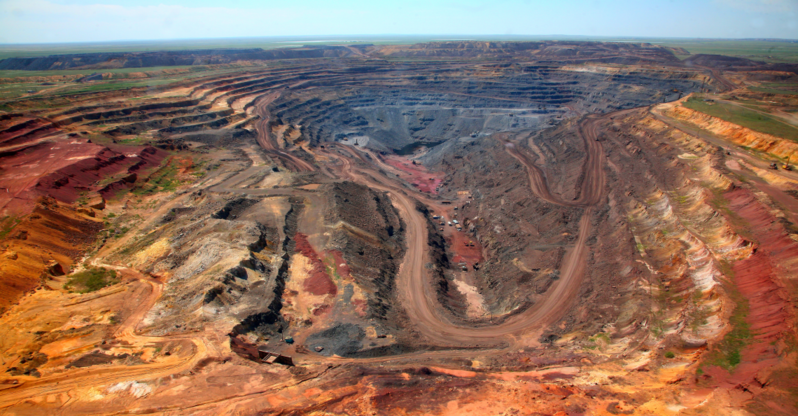
This is a lithium mine, which will surely be restored to its natural state soon…
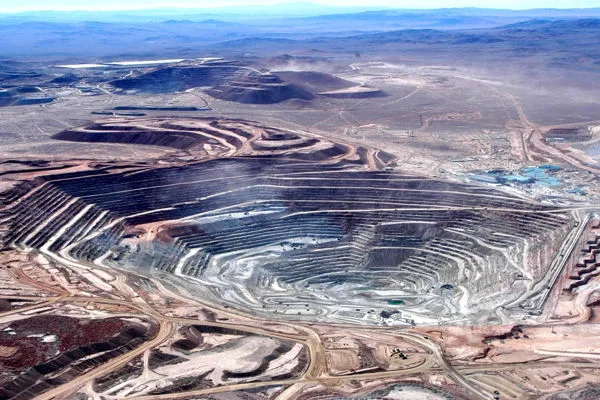
Here’s a cobalt mine (ignore the child workers), which looks quaint, doesn't it?
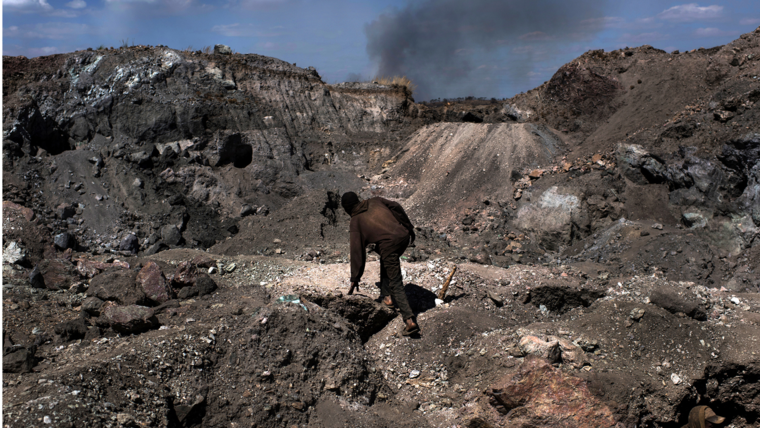
A manganese mine, which adds some lovely architectural lines and flourishes to the otherwise ugly nature. I’m sure the animals appreciate the makeover:
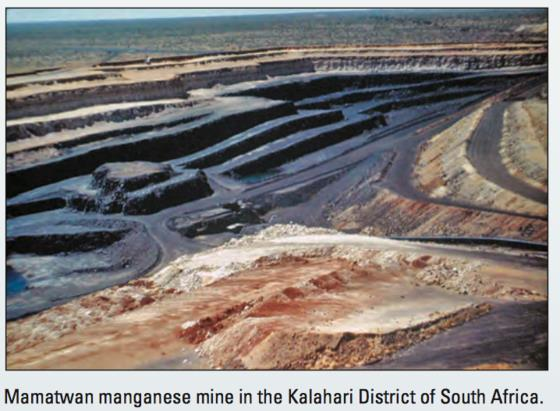
A nickel mine, contrasting tastefully with the surrounding natural forest:
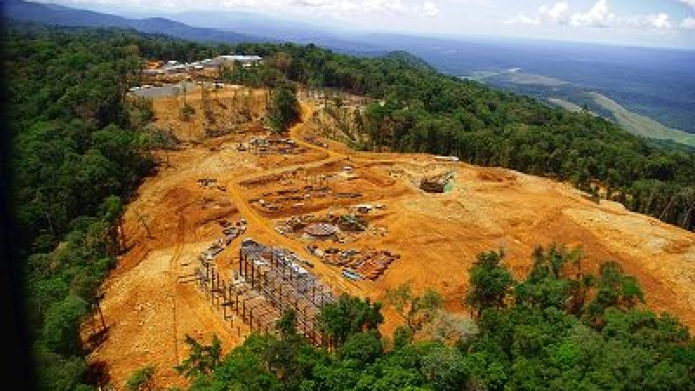
And finally, here’s some graphite being mined by an enormous diesel powered machine. How idyllic:
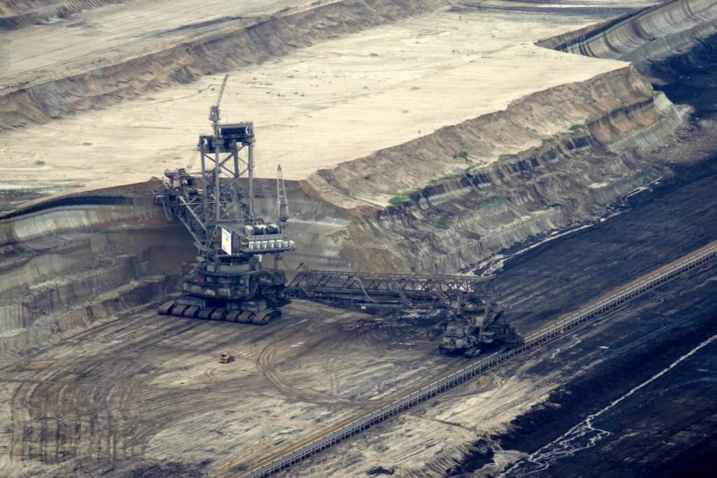
Now, I ask:
Do any of these look "green" to you?
This is where batteries come from. The ground.
And how about the millions of litres of diesel that is required to power one of these mines to get this stuff out of the ground?
Or the helicopters, trains and planes that use diesel to get the millions of litres of diesel to power these mines in the first place?
We could go on and on. And on and on and on.
The components that go into car batteries mean that EVs both pollute the environment in the construction process, as well as at generating emissions at the power source.
The fact that you don’t see the exhaust of EVs doesn’t mean they are not damaging the environment - a fairly simple point seemingly missed by… er… everyone.
Well, almost everyone:
The Union of Concerned Scientists has calculated that:
Manufacturing a mid-sized EV with an 84-mile range results in about 15 percent more emissions than manufacturing an equivalent gasoline vehicle. For larger, longer-range EVs that travel more than 250 miles per charge, the manufacturing emissions can be as much as 68 percent higher.
Wait a minute?! That’s not “green”? Get these scientists some more greenwash.
If you haven’t read the claims that EVs actually contribute MORE to climate change than traditional internal combustion engines, then I suggest you take the time.
And note the amount of greenwashing when you research this topic for yourself. Any criticism of the magical clean energy revolution is swiftly “fact checked” or dismissed as a political or unscientific opinion.
Now that we’ve shown that EVs are not as environmentally friendly as they are being made out to be, let’s look at some of the realities in these lofty targets set by the UK.
So the UK plans to ban the sale of internal combustion engines by 2030.
That implies that a lot more stuff out of the ground - you know, like in those nature shots we included above, which we’ll remind you, is all diesel powered.
What’s seemingly left out of the debate (or more accurately the thinking process) is the sheer amount of commodities that would be required to make this target happen, which is what we are most excited by as investors.
The amount of forecasting by those responsible for coming up with this nice round number of 2030 appears to rhyme with hero. It’s as if the Imperial college of London and that clown Neil Ferguson are providing the forecasts.
In order for the UK to meet this target, it needs the amount of copper equal to the entire global supply mined in 2018.
Apologies to the rest of the world… the UK, which represents 0.87% of Earth’s population, is going to require the lion’s share of global copper… just for its cars.
I’m sure the rest of the world will be fine with that. Foregoing food production, transportation, construction, healthcare… All of it will be worth it so that the UK can drive Teslas.
Admittedly the math on coming up with these figures is not straight forward. But even if the UK required half the copper it’s claiming it will need, the result will be the same: epic failure.
There is seemingly a complete and utter lack of awareness of what is required to dig up, refine, transport, manufacture, use and then dispose of or recycle these raw commodities.
The copper required for the UK’s EV market being one tiny, insignificant example in the grand scheme of things.
Zoom out and you realise that many countries have the same, unachievable, greenwashed horseshit targets that are simultaneously going to:
- Destroy the environment
- Create shortages
- Destroy free markets and price discovery
- Increase the cost of living
- Impoverish people (except for the boards of green companies)
Basically the opposite of every single set of greenwashed “goals”, “objectives,” or “targets” countries or institutions like the UN or World Economic Forum flaunt about like they’re staring in an episode of Captain Planet.

And we won’t mention what will happen when hydrocarbon rich countries like Russia or China don’t play the game and create an ESG impasse.
Because they will.
Of course, all this is “bad” in the sense that we love breathing clean air, drinking clean water, and don’t want to be caught in the middle of any pesky world wars over geopolitical issues such as who is responsible for climate change. Because the coming wars will likely be fought between those countries that have bought into the UN and WEF climate hysteria and those who haven’t bought into this agenda.
But, as investors, we must play the hand we’re dealt.
Nothing you nor I can do will change what has already been decided by our “leaders” and swallowed as gospel by the general public. The next best thing is to protect ourselves and our loved ones, and use this as an opportunity.
This is binary - If you don’t position yourself for profit, you’re going to be impaired… by default.
So how does one profit from the greenwashing bubble?
The idea is simple. Buy energy and buy commodities.
- They’re the cheapest they’ve been in decades relative to the main indices
- They’re critical to human civilization
- They’re absolutely critical to political security
I’ve said it before and you’re probably tired of hearing it: no country has political security without energy security.
If you agree with the above, but don’t know where to start, consider our Insider program or become a Glenorchy client. We have spent years researching this opportunity, and picked a basket of stocks we are investing in — uranium, battery metals, rare earths, silver, copper, natural gas, and others — which will likely profit whether the magical clean energy revolution happens… or not.
-----------
Want to learn how hedge fund managers are seeking to
profit for the greenwash bubble (among other things)? Go here (it's free)
Keine Kommentare:
Kommentar veröffentlichen